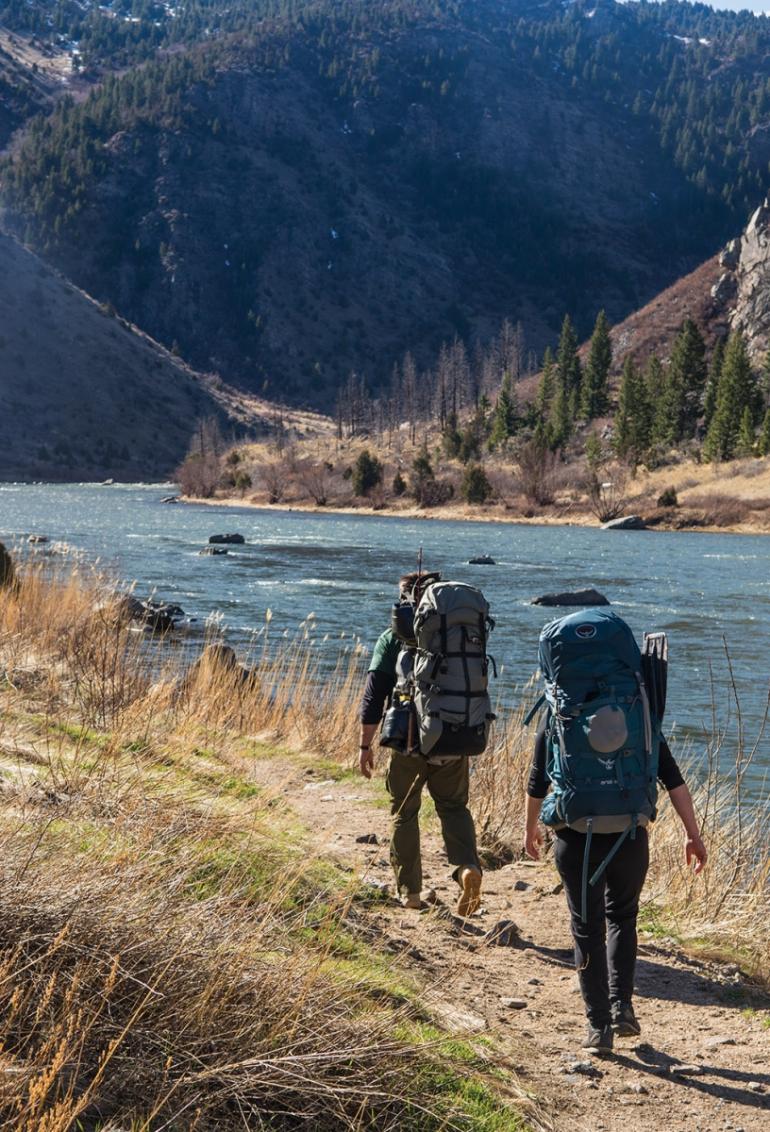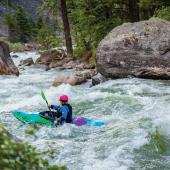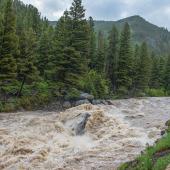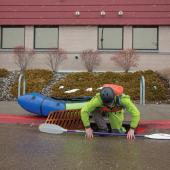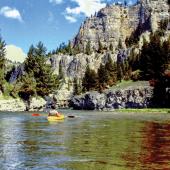Boating the Backcountry
All about packrafting, the next big thing in wilderness travel.
Standing on a 12,058-foot peak in the heart of continental America’s remotest spot with kayak paddle blades sticking out of the top of my pack left even me a bit confused. But one half of that paddle came in handy for controlling my glissade down the NW face of Thorofare Mountain in the Teton Wilderness a decade ago.
I followed elk and bear trails down the Thorofare Creek drainage for four hours, when the creek became just big enough to do what I wanted to do: float it in a packraft. After a day and a half of dodging downed lodgepoles to the Yellowstone National Park boundary, I deflated my raft, hiked back up and over the Thorofare Plateau, and floated the North Fork of the Yellowstone. I repeated this hike-and-paddle cycle with the South Fork of the Yellowstone, Atlantic Creek, and Pacific Creek, finally finishing in the valley leading to Jackson Hole, Wyoming.
I had traveled for ten days, covered nearly 200 miles of travel by trail, brush, and river, and started with a pack weight of less than 40 pounds—including a whitewater-worthy boat!
A packraft is an ultralight inflatable raft that generally weighs less than five or six pounds for whitewater models, and less than three pounds for flatwater boats. Packrafts have given an entirely new dimension to wilderness travel, opening up vast opportunities for grand traverses of big wilderness landscapes.
My packrafting expeditions in the northern Rockies have taken me across the best of them: a linkup of Danaher Creek, the South Fork Flathead, Spotted Bear, and Middle Fork Flathead Rivers in the Bob Marshall-Scapegoat wilderness complex; skip-hop-paddle trips across the northern Beartooths to paddle Hellroaring, Buffalo, Slough, and the Stillwater; and what has now become a packrafting classic—the Thorofare-Pacific traverse described above.
Packrafts aren’t limited to wilderness travel, of course. In and of themselves, they are a terrific mode of transport for exploring any river, whether you’re day tripping down the Yankee Jim Canyon on the Yellowstone in the heat of summer, enjoying a lazy float with your family on the Missouri, or showing the kayakers and tourists in paddle rafts what they’re missing as you fly past House Rock on the Gallatin’s Mad Mile.
Packrafting is not a new sport. Perhaps the earliest inflatable packraft was the infamous 7.5-pound “Cloth-Boat” invented in the 1840s by Lieutenant Peter Halkett of the Royal Navy. But recent technologies in materials and welded seam design have made the modern-day packraft one that can be paddled through big rapids (the Grand Canyon has seen a number of packrafting descents now), technical whitewater (Class V creeks are commonly descended in packrafts), and even waterfall drops in exotic and remote canyons around the world.
But because recreational packrafting is relatively new, there is limited instruction about it. A terrific introduction to packrafting can be found in Roman Dial’s excellent book Packrafting. Or you could take a Bozeman-based packrafting course or hire a local guide. But it's hard to learn to paddle from a book, and courses and guides require an outlay of time and resources that not everyone can afford.
So I’m keen to bring the wonderful world of packrafting to the masses with the online course Learn to Packraft. Learning the basics with very carefully taught online videos, while practicing on your home waters, is an effective way to get up to speed.
We’re funding Learn to Packraft as well as the documentary film The Packrafter (a story about a long-distance packrafting expedition through the northern Rockies) on Kickstarter. Some other outcomes of a successful Kickstarter campaign will include supporting adventure filmmaking for MSU Film School students, and packrafting experiences for disabled U.S. veterans and children through a partnership with Eagle Mount. Won’t you help us make it happen?
About Ryan Jordan
Ryan is the founder of Bozeman-based Backpacking Light and is a packrafting instructor and guide. Ryan is on the Executive Council of the American Packrafting Association, which promotes conservation, education, and access for the packrafting community. Ryan lives in Bozeman with his wife Stephanie, son Chase, and black lab Maia. Visit Ryan online at ryanjordan.com or contact him here.



